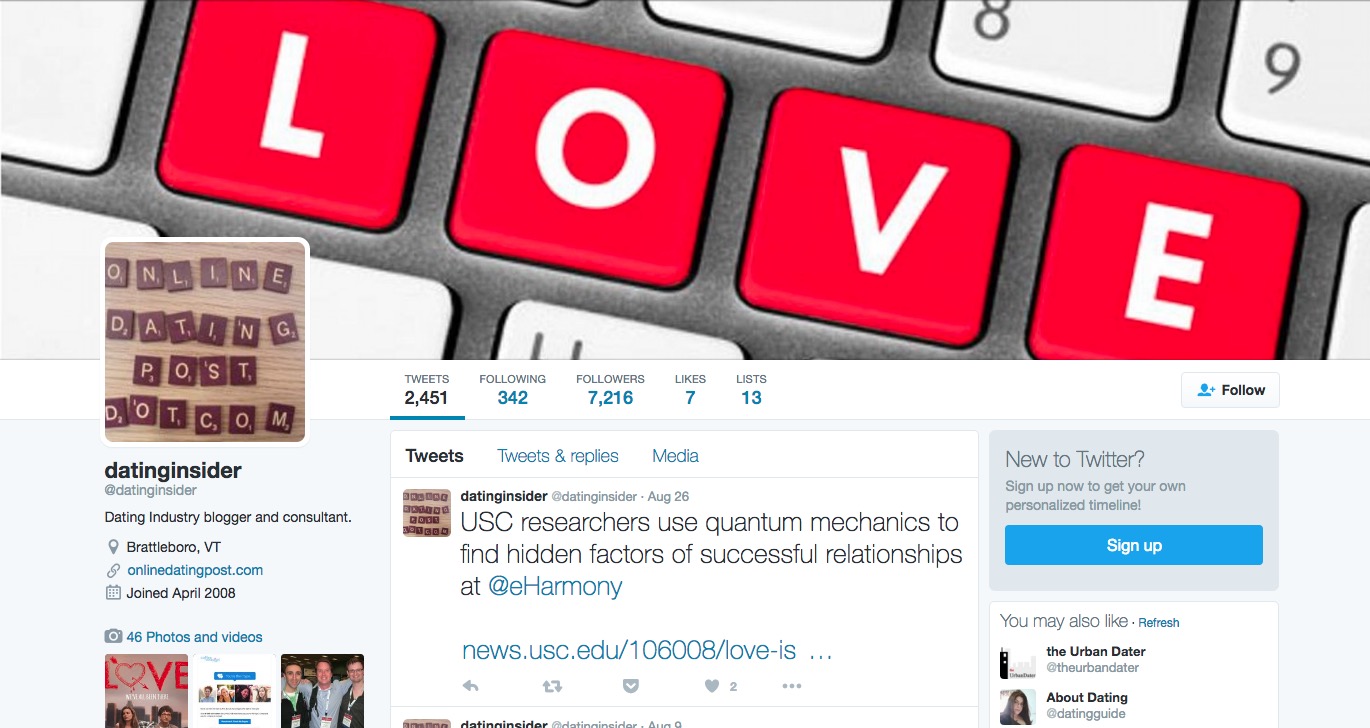Here’s another bit of thinking I did about Match and the social graph a while back. Some thoughts on Facebook’s social graph as it relates to Graph Search, and the surprising news that my match profile is partially viewable by anyone without having to log in (confirmed by 20 people just now).
A while back, I decided to poke around the only thing we can really dig into to learn about the extremely private Match empire. I started looking at the raw html that the Match web servers send to our web browsers, which in turn create the Match web pages we look at millions of times every day around the world.
It turns out I learned a few things. (Note, when I went to view-source on my Match profile today, some of the Facebook code mentioned below is no longer visible on my Match profile, but still interesting.)
To begin with, all Match profiles are Facebook “objects”. Facebook considers just about everything it touches as an “object” and gives it its own unique identifier – like an IP address or social security number, everyone has a unique one. In fact, This blog has been an Object that Facebook knows about for a long time.
Making everything an object makes sense, because as Facebook evolves from a destination to a distributed platform touching everything on the net, they want to be able to reach out and touch, search, share, read and modify as much of the content on the Internet as possible, including my likes, friends, wall posts, apps, etc.
To show you what I mean about how easy it is to look at people’s personal information on Facebook, check out these examples. Even if you do it with a browser that is not currently logged into Facebook, you can retrieve a fair amount of information about someone or a Fan page. You can bet that Facebook is putting a lot of effort into giving members easy-to-use privacy controls. And for many, that won’t be enough, ever.
If you click https://graph.facebook.com/relaxedguy you will see basic information that Facebook knows about me.
{
"id": "501791841",
"name": "David Evans",
"first_name": "David",
"last_name": "Evans",
"link": "https://www.facebook.com/relaxedguy",
"username": "relaxedguy",
"gender": "male",
"locale": "en_US"
}
My Facebook profile photo http://graph.facebook.com/relaxedguy/picture.
Coca-Cola’s Facebook page https://graph.facebook.com/cocacola.
{
"id": "40796308305",
"name": "Coca-Cola",
"picture": "http://profile.ak.fbcdn.net/hprofile-ak-snc4/203509_40796308305_256509_s.jpg",
"link": "http://www.facebook.com/coca-cola",
"likes": 32007587,
"category": "Food/beverages",
"website": "http://www.coca-cola.com",
"username": "coca-cola",
"founded": "1886",
"products": "Coca-Cola is the most popular and biggest-selling soft drink in history, as well as the best- known product in the world.\n\nCreated in Atlanta, Georgia, by Dr. John S. Pemberton, Coca-Cola was first offered as a fountain beverage by mixing Coca-Cola syrup with carbonated water...."
}
Enough generic examples, lets’ get to the good stuff.
Primer: The “og:somedata” stuff seen below is what site owners put invisibly at the top of each page they want Facebook to consider an object. For this blog its the same details for all pages. For Match, each person is an Object that has special attributes like username, photo url and a few other things we won’t get into here.
My Match username.
<meta property=’og:title‘ content=’agood1foru2know’/>
What am I?
<meta property=’og:type’ content=’match:person’/>
Did you know that all Match profiles are at least partially publicly viewable without logging in?
My primary Match profile photo and all of the rest, are public. Has this been the case all along or is it a new change?
My full profile address.
<meta property=’og:url‘ content=’http://www.match.com/profile/showprofile.aspx/?uid=B88an16AMuFBZCSkMRWw5A==&handle=agood1foru2know&tp=ms&trackingID=526684&bannerID=747303‘ />
Facebook application ID number.
<meta property=’fb:app_id‘ content=’89318d7e8d124c0eb6dc64adcbb14c60’/>
Beginning of one of my profiles.
<meta property=’og:description’ content=”What’s up summertime singles? Meet a left-of-center ENFP, blah blah blah…/>
Public profile photo.
<meta property=”og:image” content=”http://pictures.match.com/pictures/54/75/81825475V.jpeg“>
I’m not sharp enough to decode the possible relationship between the “uid” and the picture url, but the big issue is that over 100 million Match user photos are (if I’m correct) freely available for anyone to download. (20 million members, average of 5 photos per member = 100 million give or take.)
Also seen in the raw html that comprised Match profiles is the following text:
Upload a Photo & Unlock Hers
Her Photos are Unlocked!
This looks like a Facebook call-to-action. I have to upload a photo to see another person’s photos. Or its another one of those Match features that I never pay attention to.
What if Match is looking to expose profiles on Facebook as a way to drive Facebook users to Match? This is sort of what they did on a trial basis with Are You Interested a few years ago. But I have a feeling that Match is going for something much bigger. Or maybe it’s something else, I dunno.
Perhaps the Facebook object code has been there for many moons and I’m way off-base, I certainly don’t view the html source of every dating site I come across (but maybe we all should).
What we do know is that everything is an object to Facebook and that Match has made it so that all 20 million members and their photos are publicly accessible objects that Facebook knows about and can act upon.
What is Match going to do with Facebook-aware profiles?

